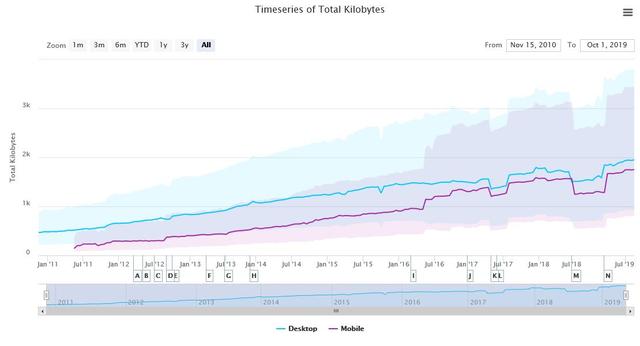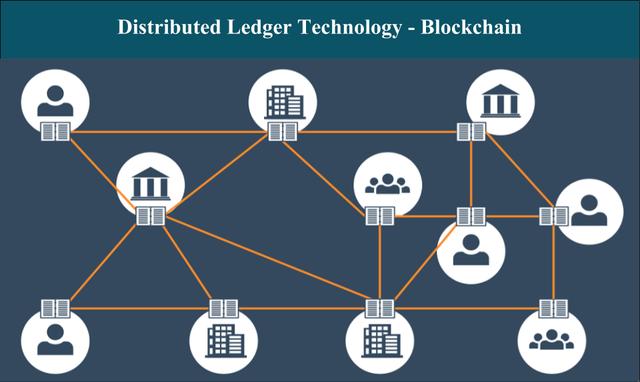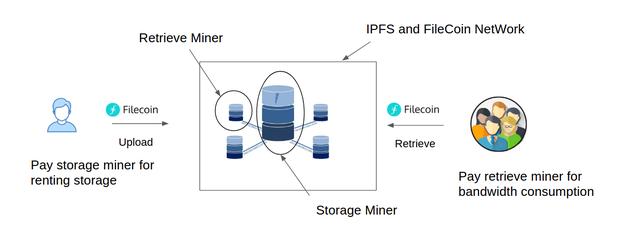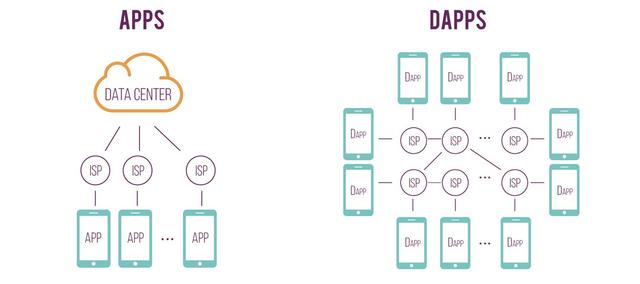Analysis | What's the value of Filecoin coming soon?

Recently, various domestic provinces have used blockchain technology to pilot projects in various fields, including cross-border payments, distributed storage, and even digital asset transactions. Today, Chen Yang, director of the Local Financial Supervision and Administration Bureau of Hainan Province, mentioned that Hainan will be promoted into the regulatory sandbox mode through digital encryption and blockchain. Eurotech Group (formerly OK Group) announced the establishment of a blockchain offshore digital asset trading room in Sanya to promote the development of blockchain technology. The announcement of the Eurotech Group basically allows us to determine the state's attitude towards digital assets. As an old domestic trading platform, OK's representative identity is the currency circle. Especially, there are many small currencies on the trading platform. He can enter the sandbox experiment, which proves that the country attaches importance to digital asset trading.
In addition to digital asset sandbox transactions, distributed storage is also one of the recent hotspots. On September 25 this year, FilecoinNetwork updated its Q2 and Q3 reports and mentioned in its report that it will launch Filecoin's testnet on December 11 this year, and is expected to launch its main network next year, in March 2020 News. Despite the delay, IPFS and Filecoin are still one of the most interesting projects in the blockchain industry.
The Filecoin project is an incentive layer for the decentralized network transport protocol IPFS (InterPlanetary File System). IPFS aims to create a persistent network protocol for distributed storage and shared files. In the IPFS network, each node will form a complete distributed file system. Compared to the blockchain industry, which has mainly focused on various application-level projects in recent years, IPFS, which aims at the underlying technology of the network architecture, has significantly greater ambitions, and its ultimate goal is to replace HTTP.
- Bakkt trading volume breaks 100 times, Wall Street wolf really comes
- How to get a fixed interest rate on your DAI assets?
- Bakkt's transaction volume exceeded 100 times, can Bitcoin become a mainstream asset?
HTTP (HyperText Transfer Protocol) was initiated by Tim Berners-Lee, the "father of the World Wide Web" in 1989. After 30 years of research, development and improvement, it is now the world ’s World Wide Web data communication basis. The vision of IPFS is to decentralize the data transmission of the World Wide Web, that is, to store data in various nodes instead of centralized servers, so as to achieve some advantages that cannot be achieved by the current centralized network transmission protocols. , Such as information security, more efficient querying and management.
Filecoin, as a supplement and incentive project of the IPFS protocol, aims to provide users in the actual sense with incentives for participating nodes. In fact, in the Internet industry, the mutual relationship between the project body and the public chain token is a kind of dependency relationship that advances, retreats, and co-prosperity. From this point of view, we can think that IPFS and Filecoin share opportunities and risks with each other, but as the project's ontology, the value dependence of Filecoin will be more prominently highlighted by the IPFS protocol. Therefore, starting from this point, reorganizing the meaning and value of IPFS is a very meaningful and necessary work.
First, the cramp of the HTTP protocol
(1) IPFS protocol can better meet the needs of big data transmission in the Web 3.0 era
If the brainstorming forum between publishers O'Reilly and MediaLive International in 2004 was used as the source of Web 2.0, the concept has now survived for fifteen years. Compared with the Internet ecology of fifteen years ago, today's ecological innovation is multifaceted. On the one hand, users have changed from passive receivers to active contributors; on the other hand, as the intuitive window of the Internet world, the browser experience It also began to gradually shift from low-level graphics and color static views to interactive experiences.
The direct result of the advancement of technology is the rapid expansion of the volume of webpage files. From November 15, 2010 to October 1, 2019, the median volume of webpage files on the PC side increased by 1950.4Kbs, an increase of 317.0%. ; On the mobile phone, this figure is 1752.0Kbs, an increase of up to 1109.9%.

Figure 1: Web page file size from November 2011 to October 2019 Source: HttpArchive
When the file size of a web page is still small and the web page mainly carries pictures of text files, the HTTP protocol is undoubtedly effective. But nowadays with the increase of such as HD video files and big data transmission, we have to adopt technological innovations to cope with the increasing demands and challenges. But currently we are adopting the method of upgrading hardware to carry out technological innovation, and it involves lower-level applications.
Second, the operation mode of the IPFS protocol
(1) Distributed storage and hash lookups make storage queries more efficient
Unlike mainstream storage systems represented by Dropbox or Amazon S3, the storage system of the IPFS protocol is decentralized, which means that under the IPFS protocol, files do not need to be stored centrally in a server that operates 24 hours a day. After the file is uploaded to Dropbox, the protocol will copy and save these copies on multiple scattered nodes in the entire IPFS network-as IPFS network nodes will go online and offline from time to time due to contributing users' use and shutdown. This node ensures that when users need to query files, there will always be online nodes available.
After the file is stored, the storage address is represented in the file by a hash method. When a file needs to be downloaded, only the hash value needs to be provided to complete the download of the file. IPFS uses a transmission technology similar to BitTorrent's batch download and splicing, coupled with its decentralized nature. Compared with centralized competitors, IPFS has faster file transfer and download speeds.

Figure 2: Distributed Storage Technology Source: DataScienceJunction
(II) Blockchain technology guarantees the security of documents
IPFS technology itself does not provide file encryption, but is supplemented by blockchain technology to enable IFPS to protect user files. We also assume that Alice intends to send a file to Bob via IPFS. At this time, Bob can publicly publish his public key first, Alice uses the public key to encrypt the file, uploads it, and submits the hash value stored in the file to Bob. After downloading, Bob uses his private key to decrypt it. Similarly, we can see that since each node does not own Bob's private key, these nodes do not need to trust themselves.
(3) Filecoin can provide effective incentives for IFPS node contributors
The IFPS mentioned above is a decentralized storage protocol, which means that each network node needs to contribute its own storage space to users. In a centralized application context, storage space providers charge users a uniform amount of fees to maintain the system's operation and profit from it. In order to inspire more users to improve the entire file storage community, IPFS uses the token Filecoin as a way to encourage users to contribute nodes.
Filecoin's miners are divided into storage miners and retrieval miners, which means that during the entire use of the IPFS protocol, both users providing storage space and users of retrieval services can get a certain number of Filecoins as incentives. Considering that the storage business has its own business logic-that is, the security requirements for files, miners can not only get rewards in the process of providing services, but also the possibility of receiving penalties. For example, a storage miner accidentally deletes the file uploaded by the customer, then the Filecoin pledged by him for mining will be deducted as a penalty.

Figure 3: IPFS incentive mechanism Source: Medium
Value and uncertainty of IPFS protocol and Filecoin
(1) The value space of Filecoin is determined by decentralized storage
As mentioned above, IPFS and Filecoin are actually two sides of the same co-prosperity and loss. More specifically, the value geometry of the token Filecoin is completely based on the concept of decentralized storage. In the large context of web3.0 It is determined by the objective fact of how much demand there is. We can see that in the future decentralized ecological needs, decentralized storage is indeed just one of the needs, but it is very expensive to completely store data on a public chain like Ethereum, especially when the data blocks increase At that time, its cost (in Gas) actually increased exponentially, which made the public chain itself very unsuitable as such a storage medium.

Figure 4: Storage cost of the Ethereum public chain Source: CSDN
From this layer of logic, in the context of blockchain or web 3.0, the existence of an independent decentralized storage layer is necessary. And some of the characteristics required by this storage layer coincide with IPFS-they also have distributed storage, have hash-worthy identifiers, and cannot be changed. Therefore, we can think that its existence does have its rigid needs. In the business practice of the core application layer of the blockchain industry, DApp, there are indeed more than 90 DApps using IPFS for storage, including Civic, Everipedia, Decentraland, Aragon, and other high-quality products that have high hopes, but the question is still, what is the prospect of the DApp itself?
DApp is the most fist product with customer-oriented and business-oriented features on the smart contract platform in the blockchain industry. However, on the blockchain vent, it will still face problems including overheating and violent death of the industry. For example, the once-better-known blockchain game last year encountered Waterloo in 2019. Not only did the existing DApps drastically decrease, the once phenomenal-level work CryptoKitties also disappeared this year. Its game asset "electronic cat" is more The characteristics of "drumming and passing flowers" have been questioned by the "Ponzi scheme".
If 2019 is seen as a year when DApps are overheated and returned to rationality, then the industry should take a more objective look at what a clear pattern DApps can form in the future. Although its scenario needs are self-explanatory, in the face of the current App product market, what kind of cup DApps with decentralized characteristics can still share is still a question that the industry needs to think again and again.
Therefore, in this sense, the prospect of IPFS is actually closely related to the future of the DApp market. If the DApp market grows, then IPFS will have an increasing application demand, which will also absorb more Users come to contribute nodes, which drives the value of Filecoin. But if this premise does not exist, then the storage requirement of IPFS is a pseudo-proposition.

Figure 5: DApp Source: Medium
(2) Government supervision may still be a risk that Filecoin must always face
On October 12, this year, the US Securities and Exchange Commission (SEC) ruled that Telegram Group Inc. and its wholly-owned subsidiary TON Issuer Inc. did not comply with the provisions of the Securities Act of 1933 and issued tokens Grams' offers and sales were registered, and they were halted before they were issued. Later articles argue that the two projects, Filecoin and Dfinity, are very much in line with the SEC's "target user profile", so there may be a risk of being "seen."
In response to this analysis, Planet Continent published an article on October 25, "Who said the SEC would start with Filecoin? ? ? ", Wording fiercely refutes the aforementioned speculations, and reiterates that Protocol Lab has passed the SEC's filing, and the SEC will not" stick a big stick to projects that have passed review and filing. " However, for investors, considering that the time for the launch of Filecoin's mainnet has been postponed, and the related regulations of blockchain and tokens have always been strict, and the external political environment is complex and changeable, it is not necessarily the case at the last minute. rest assured.
In addition, the decentralized nature of the blockchain project inherently has the nature of adversarial censorship, and the unique business logic of the storage business has itself a strong need to be regulated by the government in order to prevent some that should not be free Content was released unregulated on the web. In a sense, for illegal content including child pornography, arms, and the drug trade, centralized storage opens the door to the convenience of supervision-even in the dark web such as the "Silk Road" , Will still be suspended under the strong government supervision. So, as a decentralized storage IPFS, how to submit a qualified answer sheet on this issue is still something to wait and see.
We will continue to update Blocking; if you have any questions or suggestions, please contact us!
Was this article helpful?
93 out of 132 found this helpful
Related articles
- EIDOS Creates New Chain Accused of "Mode"
- Which company likes to hire people the most? Which jobs are most popular? 2019 Blockchain Overseas Recruitment List
- Defective Lightning Network? This research paper says so
- Here are 7 issues currently facing blockchains, each of which is worth 1 billion
- Viewpoint | Blockchain application explosion, but still trial and error
- Does the currencyless blockchain have a wealth password?
- Forbes: 4 reasons China encourages blockchain technology






